29+ Sample Monthly Schedule
-
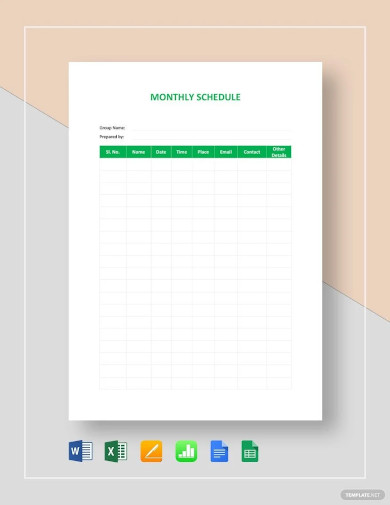
Monthly Schedule
download now -
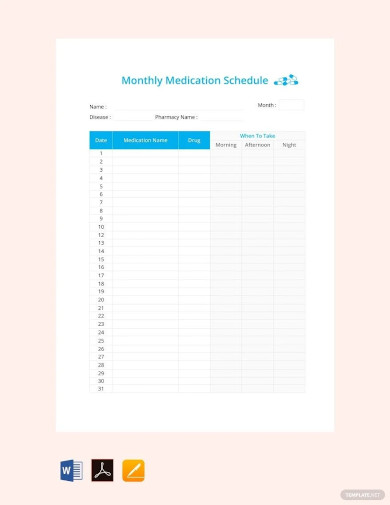
Monthly Medication Schedule
download now -
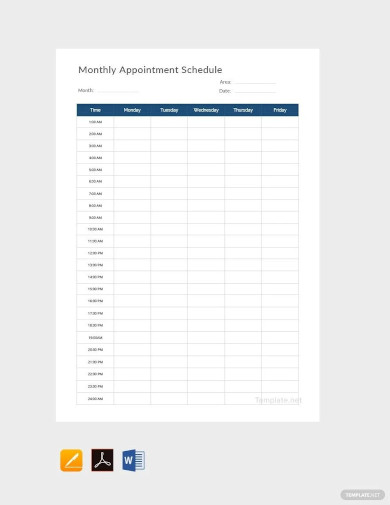
Monthly Appointment Schedule
download now -
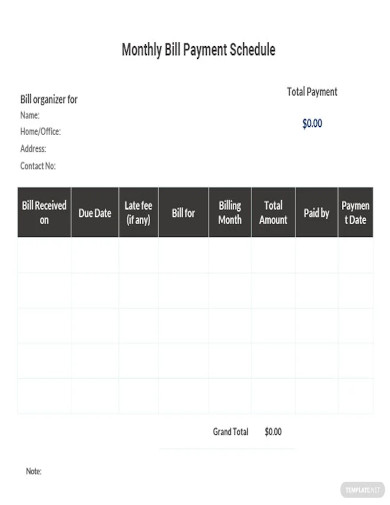
Monthly Payment Schedule
download now -
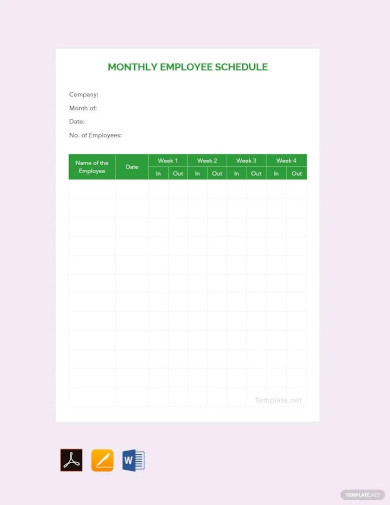
Free Monthly Employee Schedule
download now -
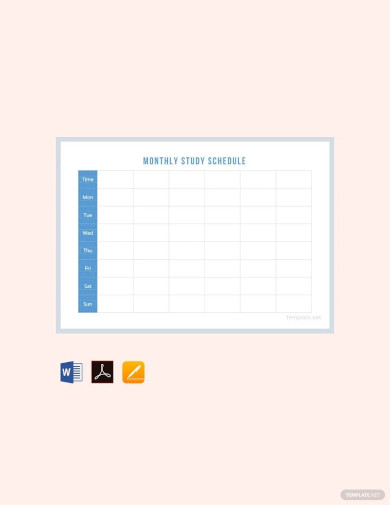
Monthly Study Schedule
download now -

Monthly Shift Schedule
download now -
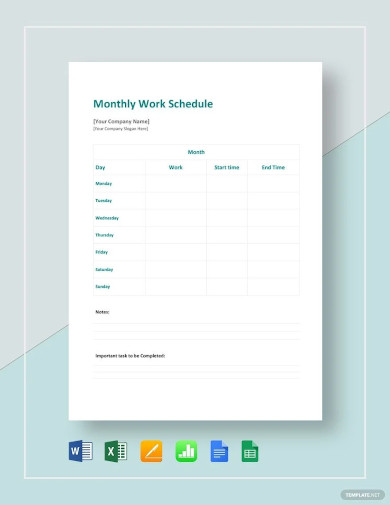
Monthly Work Schedule
download now -
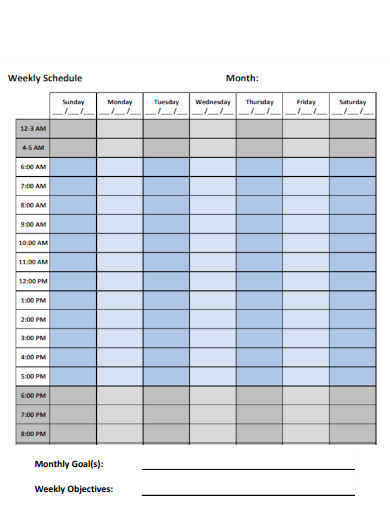
Monthly Week Schedule
download now -
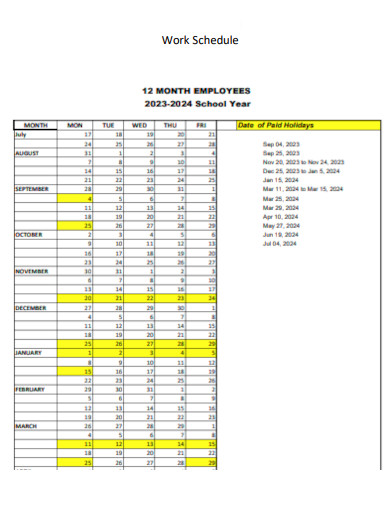
Work Schedule Monthly Calendar
download now -

Monthly Schedule
download now -
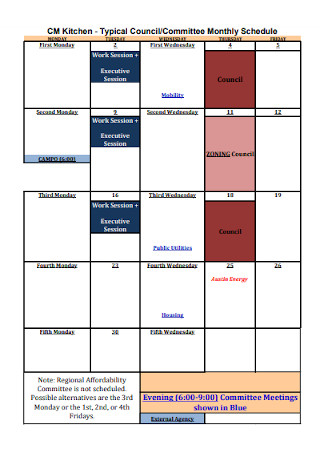
Kitchen Committee Monthly Schedule
download now -

Monthly Classified Payroll Schedule
download now -
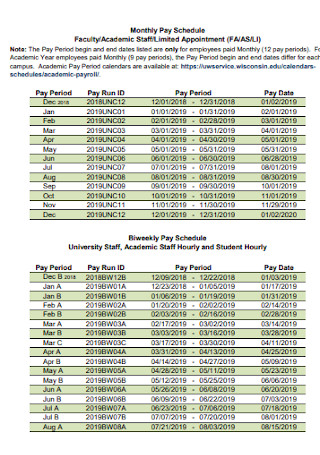
Monthly Pay Schedule
download now -
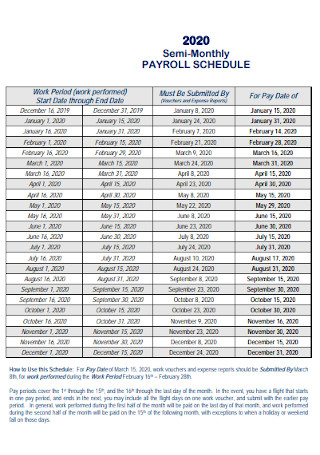
Semi Monthly Payroll Schedule
download now -
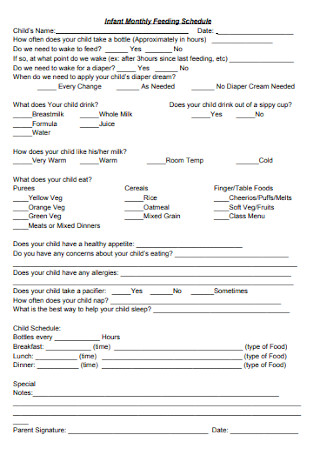
Infant Monthly Feeding Schedule
download now -
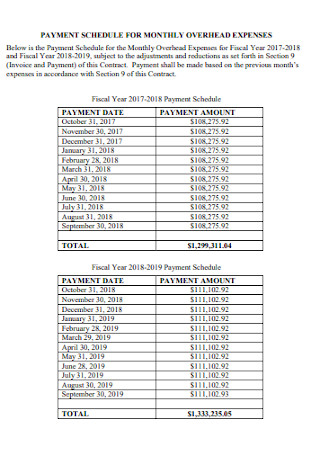
Payment Schedule for Monthly Expenses
download now -
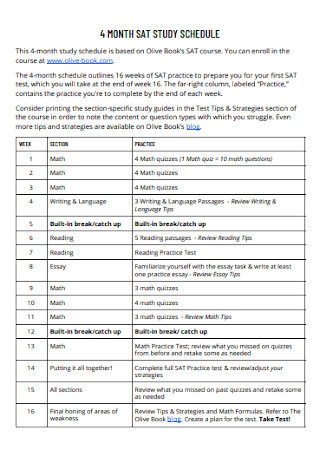
Study Monthly Schedule
download now -
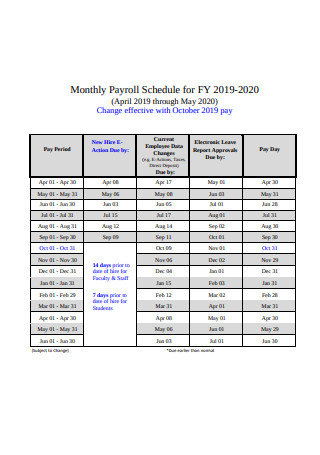
Monthly Payroll Schedule
download now -

Monthly Training Schedule
download now -
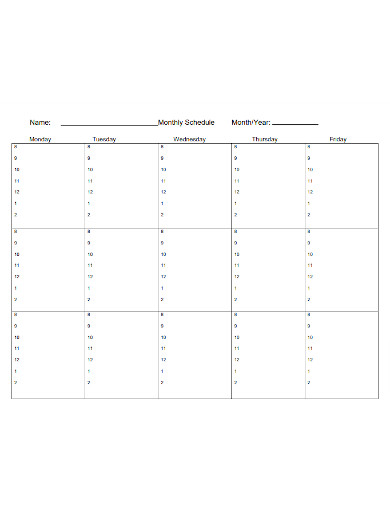
Blank Monthly Schedule
download now -
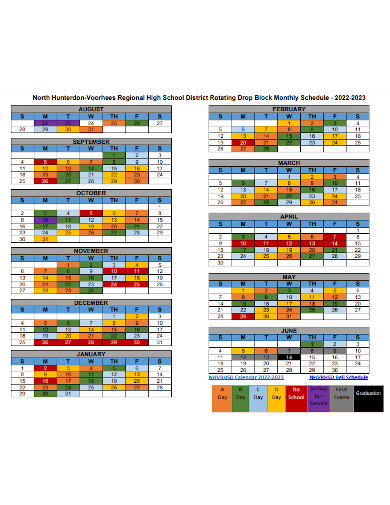
High School Monthly Schedule
download now -
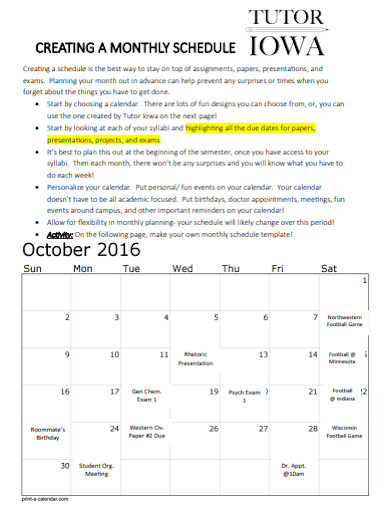
Sample Monthly Schedule
download now -
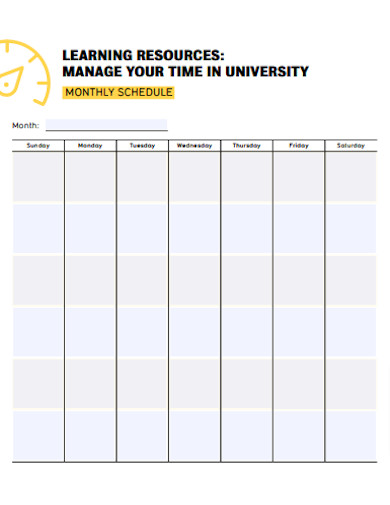
Simple Monthly Schedule
download now -
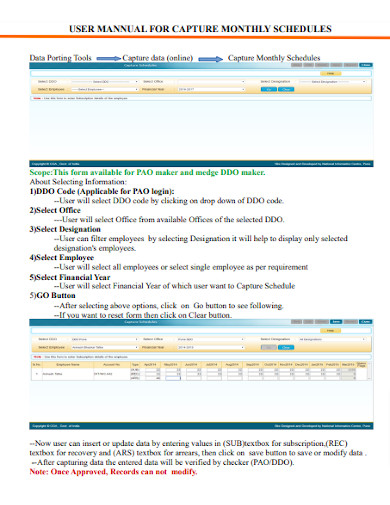
Basic Monthly Schedule
download now -
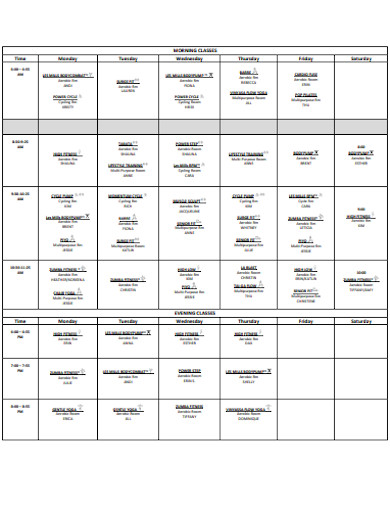
Fitness Monthly Schedule
download now -
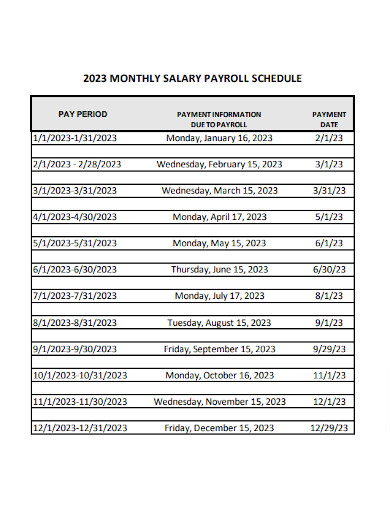
Monthly Salary Payroll Schedule
download now -
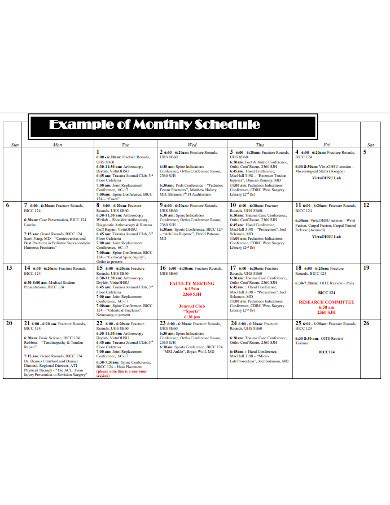
Monthly Conference Schedule
download now -
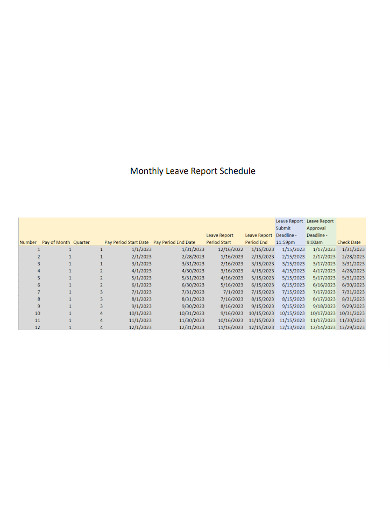
Monthly Leave Report Schedule
download now -

Monthly Fountain Schedule
download now
What Is a Monthly Schedule?
A monthly schedule is a plan that details all activities, events, and obligations that must be completed during the month. It functions as a visual representation of your priorities and enables you to effectively allocate your time, allowing you to remain organized and productive. A monthly calendar that is well-organized is more than a mere accessory. It is a fundamental component of your productivity system that helps you prioritize tasks on your weekly schedule, promotes organization, reinforces your goals, and guides your personal and professional endeavours.
Benefits of Creating a Monthly Schedule
Our schedules are filled with meeting agendas, events, special occasions, assignments, and examinations before the week has even begun. Maintaining an organized schedule is crucial for success, particularly when pursuing a higher education degree. Keeping and using a calendar is a simple and inexpensive method for students to improve their organization. Whether you prefer online calendars, such as Google Calendar or other apps, or a paper-and-pen notebook, calendars offer numerous academic and personal benefits. Here are five justifications for maintaining a monthly schedule.
Types of Schedules
Schedules serve as your choreographer, coordinating and balancing your daily activities. Daily, weekly, and monthly schedules can vary based on an individual’s personal and professional requirements. You can also begin by identifying your priorities, objectives, and duties and then choose a schedule that enables you to allocate time to them while allowing for unexpected events efficiently. There are four distinct varieties of schedules, each with advantages and disadvantages. Let’s examine the various forms of schedules and the primary objectives they can accomplish.
1. Daily Schedules
Daily schedules are optimal for individuals who require detailed day-to-day planning. These schedules divide the day into hourly or half-hour increments, allowing you to allot time for particular tasks and appointments. These are ideal for managing daily duties and responsibilities, such as appointments, meetings, and personal commitments. Daily schedules enable you to closely observe all your daily tasks, monitoring the time it would take you to complete a task under any given circumstance. In the long run, this data analysis becomes valuable for enhancing your time management skills. If you’re planning an event, you can also use the structure of a daily schedule and customize it to include the primary sample agenda for each day of your event and a brief description of what each agenda entails, if necessary.
2. Weekly Schedule
Weekly schedule templates aid in the planning and organising of tasks for the entire week, providing an all-encompassing view of commitments and due dates. A student can, for instance, use a weekly class schedule template to allot study time, attend classes, complete assignments, and participate in extracurricular activities. Similarly, it can schedule meetings, allocate time to initiatives, and manage personal obligations. These templates improve time management and guarantee effective use of the week’s available hours.
3. Monthly Schedules
Monthly schedules are utilized for long-term planning and provide a broader view of your duties and objectives. Your monthly schedule can summarise the month’s activities or a unique tracker for a particular goal(s). You can select calendar-formatted monthly schedules if you prefer a more traditional desk planner approach. This offers a clear and visual representation of each week within the month, allowing you to visualize and meticulously plan your tasks confidently.
4. Time-Based Schedules
Time-based schedules emphasize designating specific time slots for tasks, chores, projects, or assignments, with either a fixed or flexible schedule. A job’s time-based schedule specifies the execution time, date, and, optionally, recurrence pattern. The schedule is activated at the specified date/time, causing all associated tasks to be executed.
5. Task-Based Schedules
A task-based schedule prioritizes tasks, duties, projects, or assignments based on complexity or significance instead of a specific timeframe. They help manage uncertain task durations in initiatives or situations. In a workout or exercise schedule, tasks such as strength training, cardio, and flexibility exercises can be organized based on their importance instead of in predetermined time intervals. Similarly, tasks such as meetings, deadlines, and appointments can be prioritized in personal schedules regardless of specific time constraints. Task-based or remote work organizations offer flexibility in uncertain time demands.
6. Prioritized Schedules
Effectively prioritized schedules rank tasks, duties, and assignments based on importance or urgency. Success-driving duties such as market research, campaign planning, and content creation are prioritized in marketing strategy templates. This strategy guarantees critical marketing initiatives receive the required focus, optimizing results. Prioritized schedules increase productivity and efficiency by concentrating on the most essential duties. Also, non-prioritized schedules list tasks, responsibilities, project budgets, and assignments in no particular order, allowing you to select which tasks to complete based on your preferences or mood. Get our work schedules organized! Work schedules are crucial for coordinating duties, allocating resources, and maintaining organizational productivity.
How to Build a Better Schedule
Although schedule creation is essential, it is a thankless task. You spend hours devising a schedule that works for your entire staff, only to do it again the following week. The most efficient scheduling considers each employee’s availability, reduces labor costs, and decreases absences. When it’s time to look at the calendar and assign employees to schedules using your employee scheduling software, there are a variety of employee scheduling tips, tricks, techniques, and other scheduling ideas available to assist you. We have compiled our list of employee scheduling guidelines to help you determine which practices you should implement to create a better schedule:
1. Know Your Industry
When developing your schedule, you will need to consider several factors. You will need to consider both your employees’ and the business’s needs. You must consider your employee pay rates, budget, and the hours you will require the most personnel in the building. Depending on your business type, all of these factors will impact your schedule. For instance, if you run a coffee shop, you should have more employees appointed in the mornings when your shop will see the most customers. You will also need to consider your monthly budget so that you do not spend more than necessary on payroll. However, if you operate a restaurant, your scheduling requirements will be significantly different, requiring you to prioritize dinner rushes and line cooks.
2. Learn Your Team
A good schedule not only meets the requirements of the business but also benefits the employees. You must consider more than their shift availability to create a schedule that will help your business and your employees. You must also be creative with employee scheduling by assessing their skills and work preferences. One of the best methods to avoid scheduling issues is to consider the importance of your team members. Although this is only sometimes possible, scheduling employees during their preferred hours is ideal. If some of your servers prefer to work the lunch rush, you should schedule them for the noon shift whenever possible.
3. Develop an Effective Communication System
To create an effective schedule, you must know when your employees are available to work and which tasks they are best suited to perform. Ideally, you should schedule your most qualified employees for every shift. These exceptional employees will only be available for some shifts. However, through strategic scheduling, you can guarantee an overall strong team.
4. Be Innovative
No matter how well you plan, there will always be unforeseen complications. When these issues arise, you should be bold, think creatively and attempt new things. Developing an effective schedule is labour-intensive and involves numerous moving parts. When confronted with new problems, feel free to experiment with new scheduling solutions. You may have full-time employees who prefer to work four 10-hour schedules, which could be beneficial if you are short-staffed on certain days. Additionally, you may determine if any of your employees are interested in working split shifts, which can aid in resolving coverage issues.
FAQs
What is a monthly calendar used for?
Use your monthly planner for light planning by noting important events, birthdays, and holidays and setting personal goals and intentions for the month. Please take a few moments at the beginning of each month to consider your objectives and to write down actionable steps for achieving them.
Why is daily scheduling important?
An effective routine can reduce tension, improve mental health, more leisure time, and reduce anxiety. Improve your sleep: Routines such as your sleep schedule and bedtime routines impact your mental acuity, emotional health, and energy.
What is a schedule?
A time schedule is a schedule included in a contract that specifies the required delivery and related milestones and deadlines for the execution of Works and Services by the Supplier.
A well-crafted monthly schedule can be an effective tool for remaining organized, managing time efficiently, and achieving one’s objectives. Following the steps in this guide, you can create a schedule that works for you and helps you maintain a balanced, productive lifestyle. Remember to be realistic, adaptable, and consistent as you create and maintain your monthly schedule, and take the numerous tools and techniques available to maximize your productivity.
